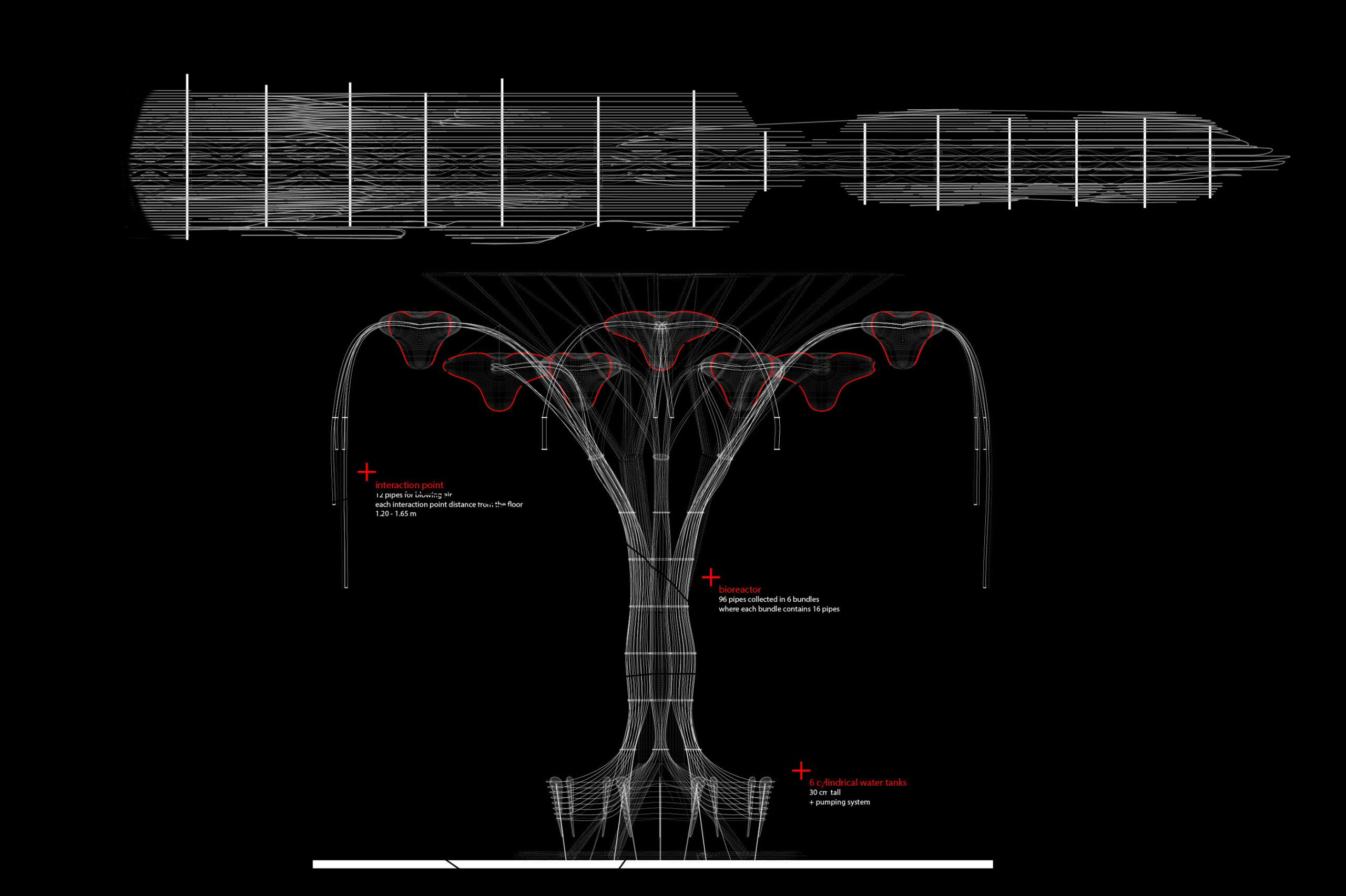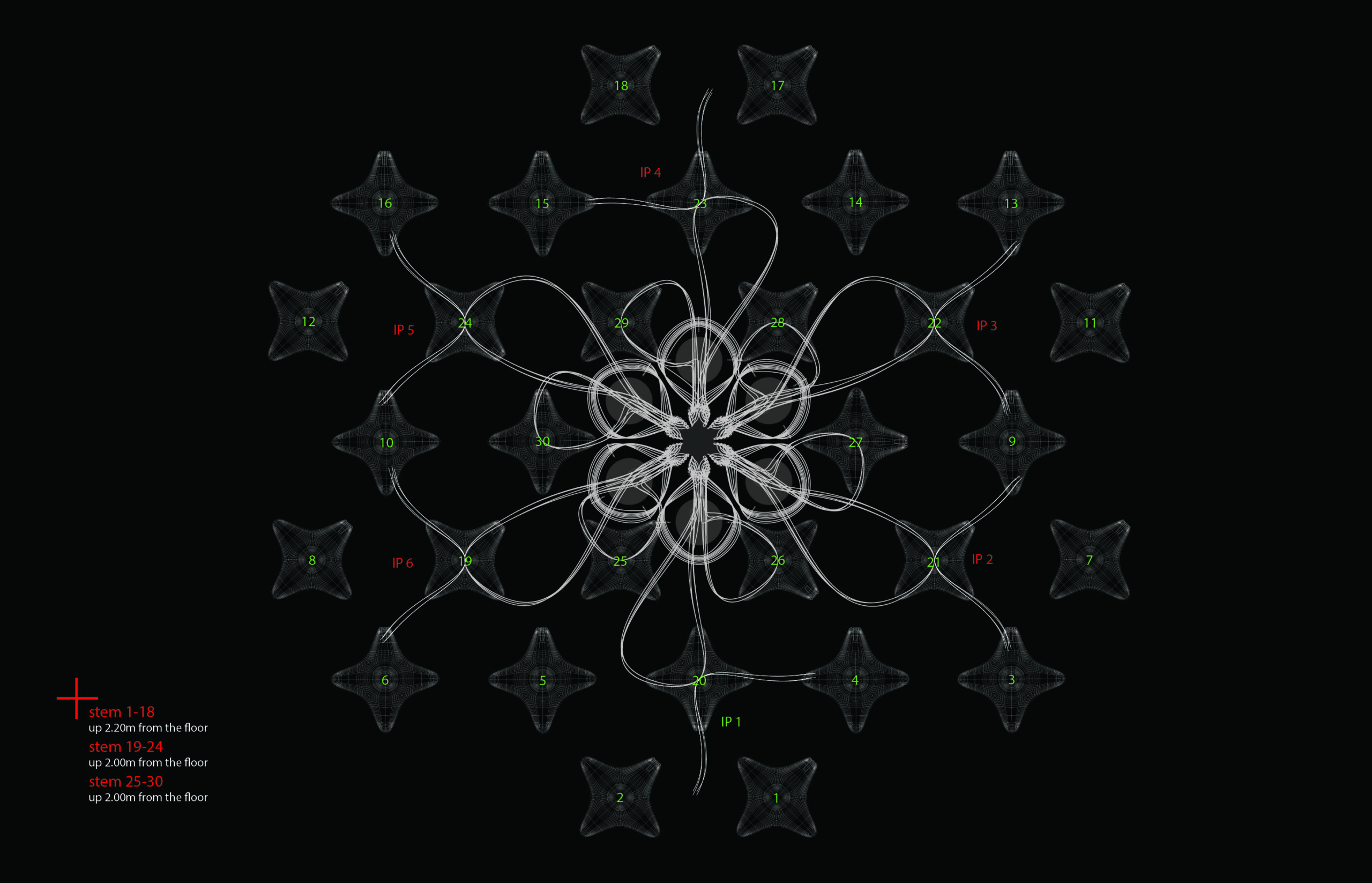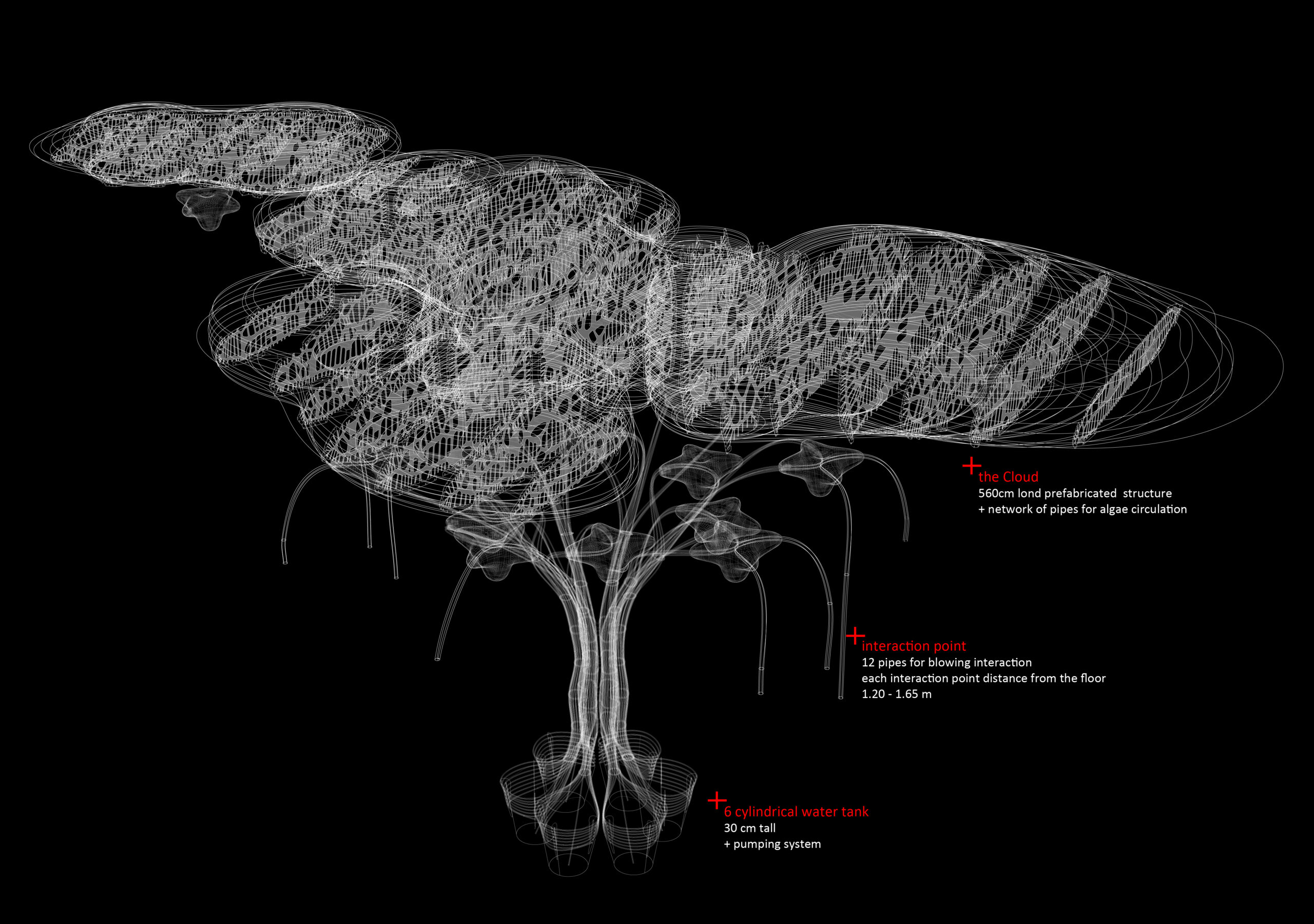HORTUS ZKM | SuperTree

Photography: NAARO
Today we inhabit the Urbansphere, an augmented version of the original Biosphere. The global synthesis of matter, energy and nutrients for human consumption forms an endless infrastructural network. Its nodes and terminals are increasingly large in scale, generic in form and automated in their functioning, designed as they are to achieve maximum productivity and increasing efficiency. The Urbansphere in this sense has infrastructuralized Nature, and any landscape or living creature is now part of it.

Photo: NAARO
Trees, the most potent symbols of our old ideal of Nature, have now also evolved into carbon sinking machines, shading devices, flooding barriers, building material, marketing tools and so on, serving the Urbansphere's increasingly demanding metabolism while also providing large parts of its soft interface towards other living creatures, including us. It is a challenging role, one that requires quick responsiveness and radical adaptation capabilities, both incompatible with the slow timing of biological evolution.

Photo: NAARO
SuperTree is an architectural apparatus that repurposes the tree to optimize its infrastructural operations as part of the present and future Urbansphere. SuperTree transforms the archetype of the tree into a high-resolution, high-productivity photo-bioreactor, able to connect human metabolismto the proliferation of life within micro-algal ecologies.
Flows of Energy [light radiation], Matter [proteins, CO2, cyanobacteria] and Information [morphology, DNA] are intercepted, processed and returned by SuperTree with an efficiency that is one order of magnitude greater than a conventional Tree.
The core structure of SuperTree is algorithmically designed; light radiation iso-surfaces are computed to determine the boundaries of the canopy, Voronoi tessellation is deployed to develop its porous internal structure and branching logics define its trunk and base rooting system. Laser cut aluminium makes it extremely lightweight, reflective and porous to incoming light radiation. Future versions will include fibrous systems in Silk, woven directly on site by genetically engineered and digitally trained social tarantula, achieving higher resolution, and incredible mechanical resistance at a fraction of the present mass.
The canopy and main trunk are entirely photosynthetic, powered by colonies of cyanobacteria which produce 10 times more oxygen than the leaves of a tree of similar size. In the next two years we will utilise a CRISPR-based* approach to selective breeding of the microalga Nannochloropsis Gaditana, to identify robust variants, capable of dealing with the most challenging urban environment.

Photo: NAARO
The microorganisms flow within a 6 km long pipe, exposing them to maximum amount of radiation. Co2 / O2 exchange occurs at the base and at the vacuum formed fruiting bodies. These host tendrils for human / plant interaction. Humans exhale CO2, thus feeding the bacteria the carbon they need to build biomass. O2 is released in exchange for humans to breathe. As biomass builds up within the fruiting bodies their protein content increases exponentially as 60% in mass of wet algae is vegetable protein oils. Such protein value can be directly sucked out of the fruiting bodies via silicon cannulae. SuperTree can feed four humans enough proteins to cover their recommended daily intake or generate biomass for biodigestion, emitting biogas as a result.

Photo: NAARO

Photo: NAARO

Photo: NAARO
H.O.R.T.U.S ZKM, 2015/2016
H.O.R.T.U.S. Karlsruhe engages the notion of Urbansphere2 as an augmented biosphere; the synthesis of renewable energy and nutrients for human consumption is reconsidered as an urban practice enabled by a novel bio-digital gardening prototype; the architectural apparatus transforms the archetype of the column into an high-density photo-bioreactor able to connect in space and time human metabolism to the proliferation of life within micro-algal ecologies such as cianobacteria cultures.
Flows of Energy [light radiation], Matter [proteins, CO2] and Information [data-feeds] are processed and fed back in real-time, stimulating the emergence of multiple mechanisms of self-regulation and evolving novel forms of hybrid self-organisation.Visitors turned cyber-gardeners are invited to engage directly with H.O.R.T.U.S enriching their material experience of bio-digital micro-ecologies and embodying future urban cyber-gardening practices.

Photo: els

Photo: els
H.O.R.T.U.S Paris, 2013

Photo: els
‘HORTUS.PARIS’ is an interactive / living environment installed at the EDF Foundation in Paris as part of the Alive exhibition. Its morphology emerges from the reinvention of one of the archetypes of architecture, the column; imagined here as a living and responsive organism, a photobioreactor of microalgae, it connects floor to ceiling as part of a continuum landscape of growth and interaction, from photosynthesis to harvest. Installed within a mirror room it offers to the visitor an immersive experience within an otherworldly environment, an architectural colonnade made of living biological substances in continuous motion and exchange.
This bio-architectural hybrid is designed to stimulate the emergence of novel material practices and related spatial narratives; in this sense HORTUS.PARIS proposes an experimental, hands-on engagement with the notion of self-sufficiency, radicalizing its applicability to the planning of large urban or architectural landscapes.
The so called proto-garden hosts micro -algal organisms [chlorella vulgaris] and is fitted with ambient light, sensing technologies and a custom-designed virtual interface. Flows of energy (artificial light radiation), matter (biomass, carbon dioxide) and information (tweets) are triggered during the four-month exhibition period, inducing multiple mechanisms of self-regulation and evolution of novel forms of self-organisation. Visitors are invited to engage daily with HORTUS.PARIS; as algal organisms require carbon dioxide to grow, visitors are invited to contribute to the survival of the installation by activating an air pump system inside the photo-bioreactors, adjusting their nutrients’ content; oxygen is released as a result, feeding the algae growth until it percolates onto a filtering surface on the ground.
Data flows daily through ‘HORTUS’, feeding its emergent virtual garden, accessible via smartphones; its virtual plots are nurtured by the flow of tweets posted by each visitor, locally and globally – a virtual sedimentation process enriching the direct material experience of the visitor turned urban ‘cyber-gardener’ and building a new form of distributed spatial memory of collective urban ecology.
HORTUS Paris 01 - ecoLogicStudio | HORTUS Paris 02 - ecoLogicStudio





